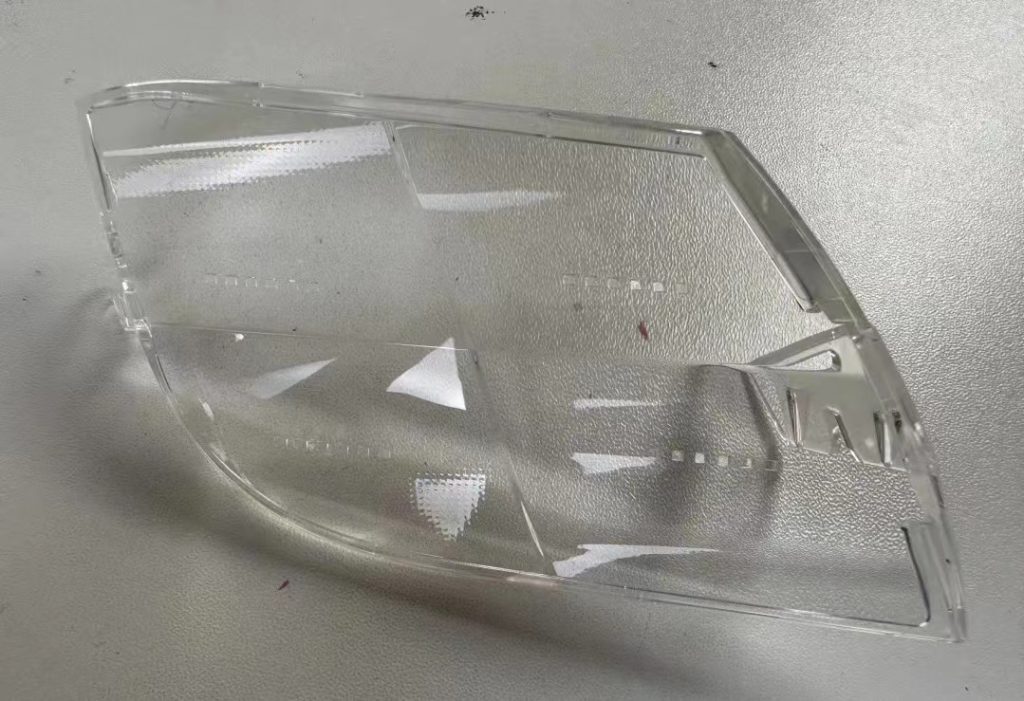Continuing from last time, let’s look at the main light source.
Let’s first look at the quadrilateral lens on the fender side. The lens is divided into 4 areas, and the corresponding lens is also divided into 4 independent cavities. We divide it into ABCD.
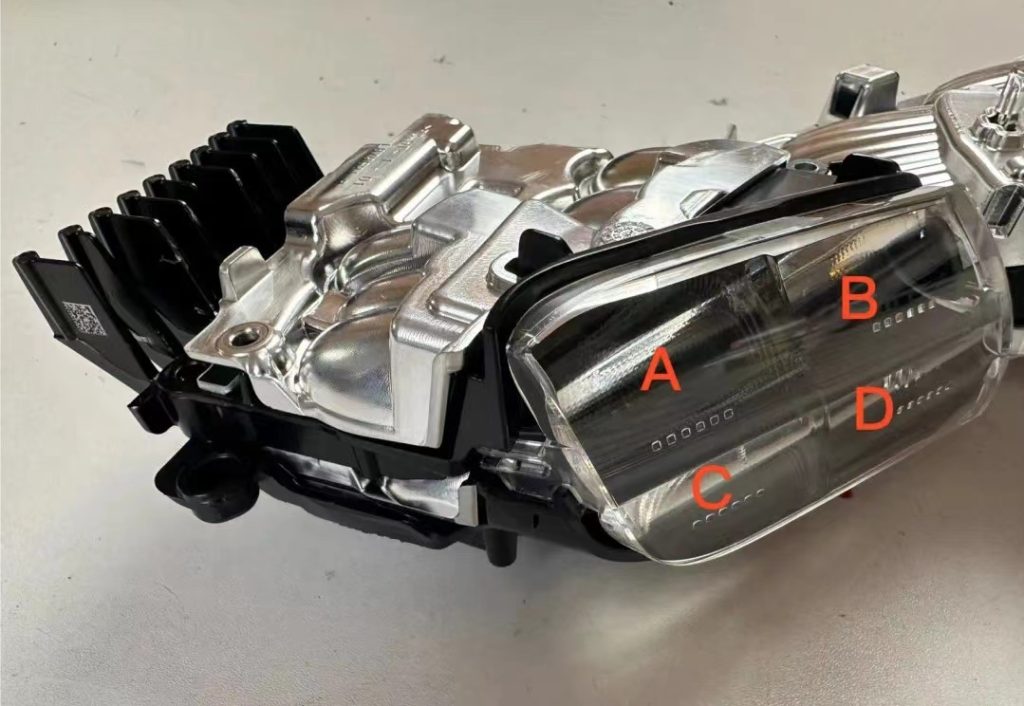
At the same time, you can see that there are two aluminum-plated reflective bowls above and below. The structure is relatively complicated. Let’s take it apart bit by bit.
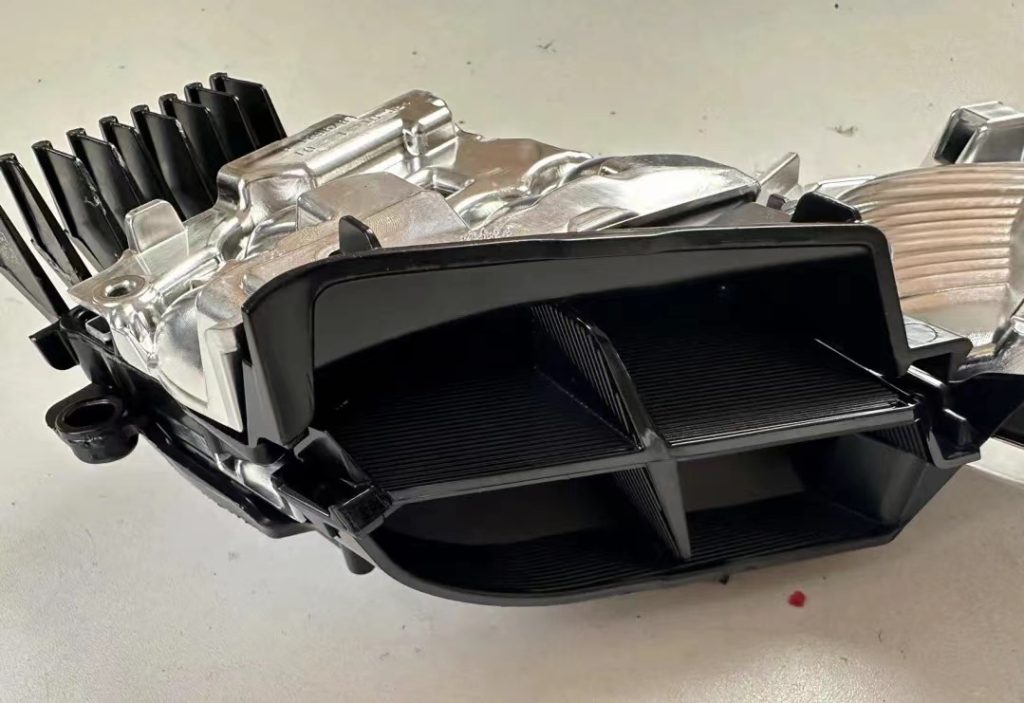
We first remove the top aluminum reflective bowl. Cavity A has three optical bowls, corresponding to the three LEDs on the pcba. Cavity B has two optical bowls, corresponding to the two LEDs.
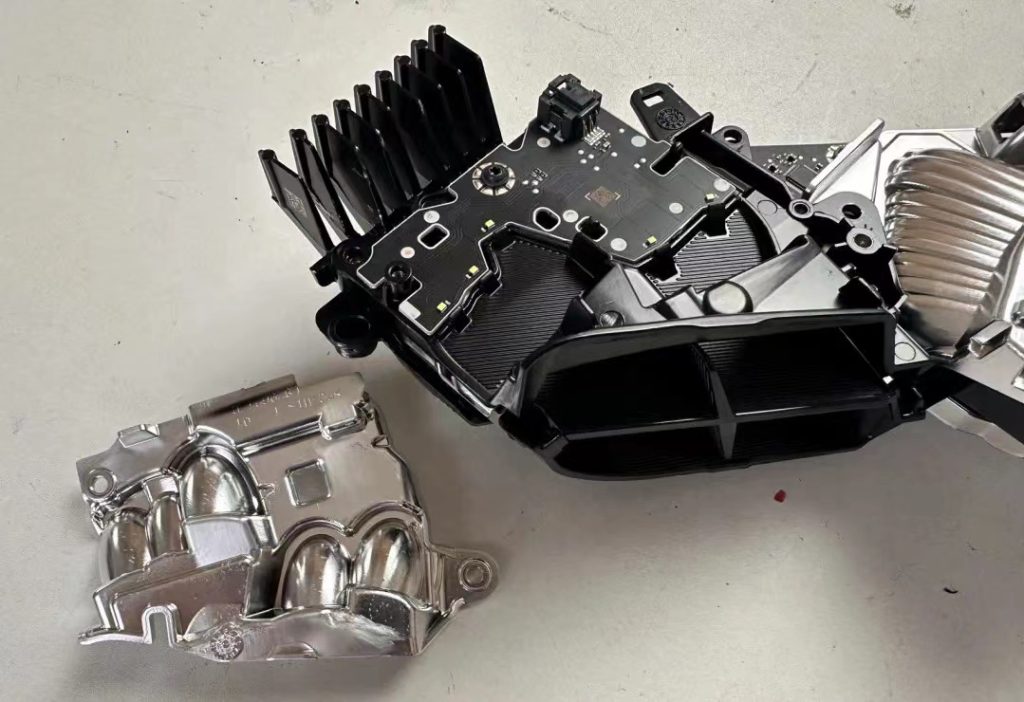
Take down the aluminum casting and you can see the aluminum-plated reflective bowl on the bottom layer. You can also see that the four cavities are divided by a PC injection-molded cross.


Finally, remove the lower aluminum-plated reflective bowl, and you can see that the bottom is a whole piece of PCB extending to the lens on the grille side.
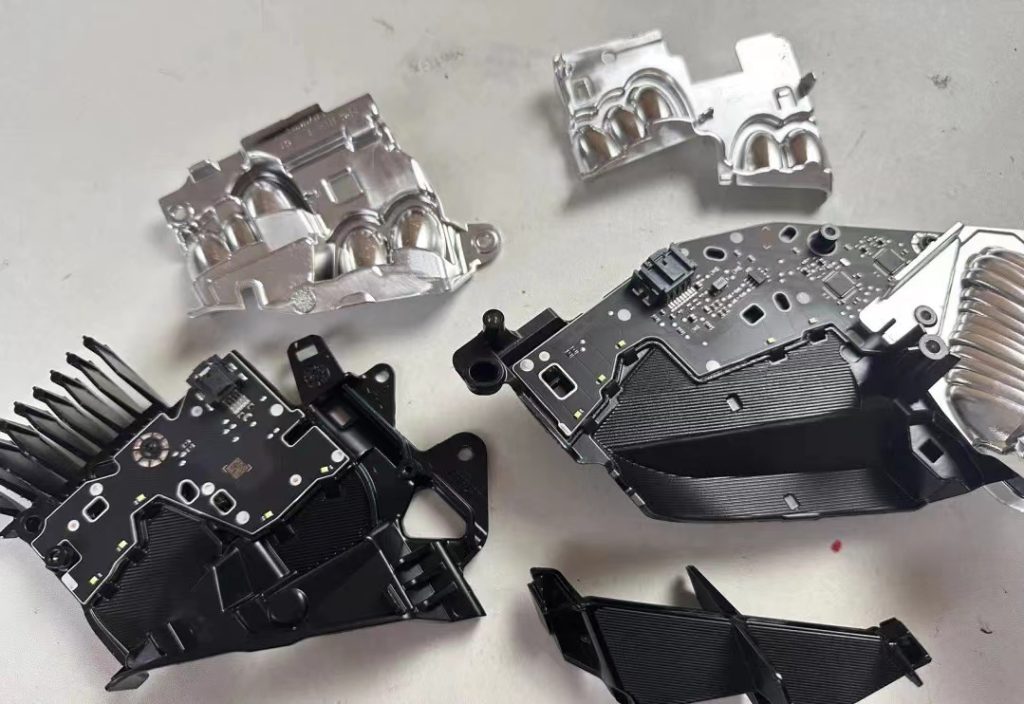
Let’s have a small family portrait.
The lens on the grille side is an irregular triangle, which we divide into areas: E, F, G, H, I, J, and K.

Through the aluminum reflector bowl above, we can see that there are a lot of LEDs here. The optical bowls are densely arranged, and there are 12 LEDs in the E and F cavities respectively. The G cavity is actually inactive.

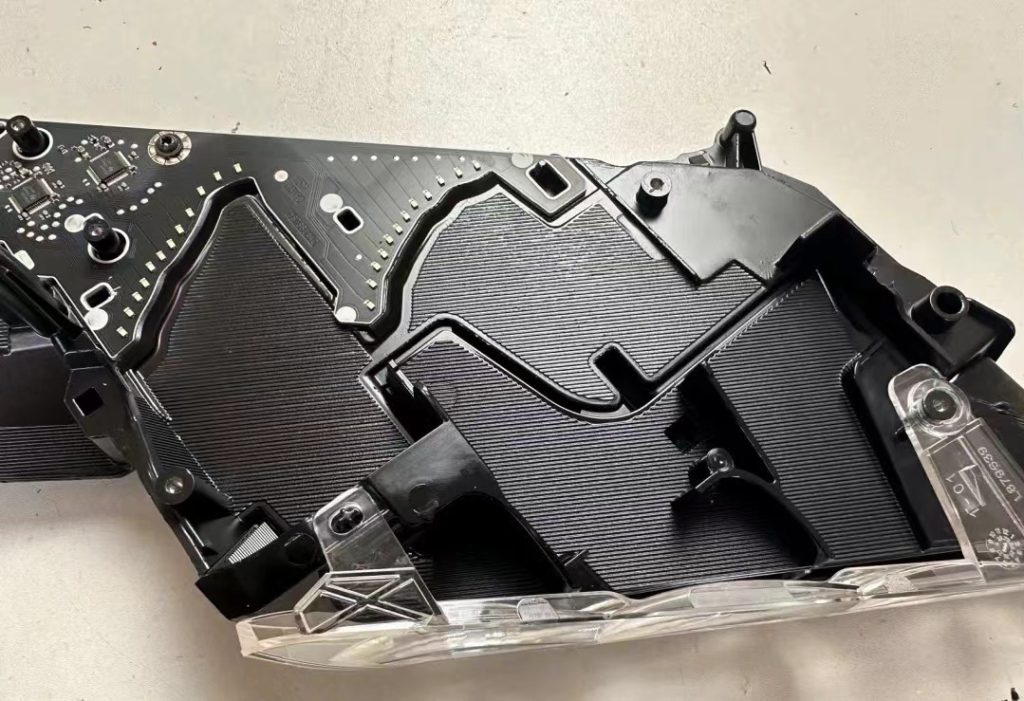
There are two TI TPS92662A matrix management chips behind the E-cavity LED.
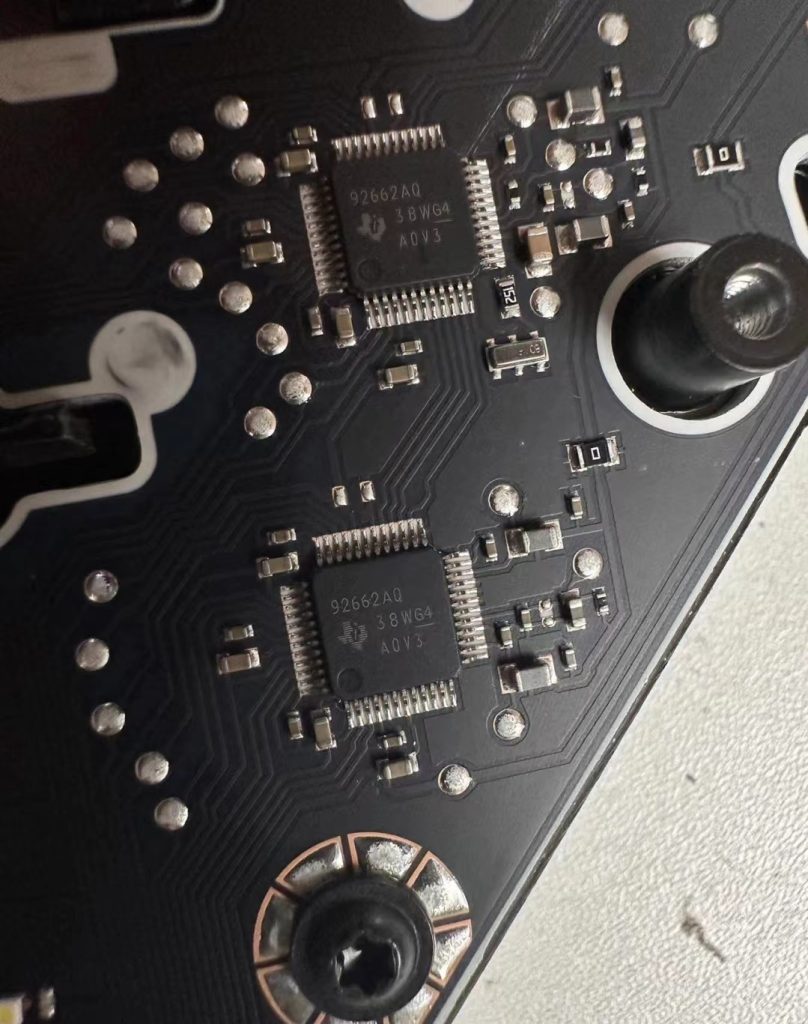
The front is almost dismantled, let’s turn it over and take a look at the bottom.
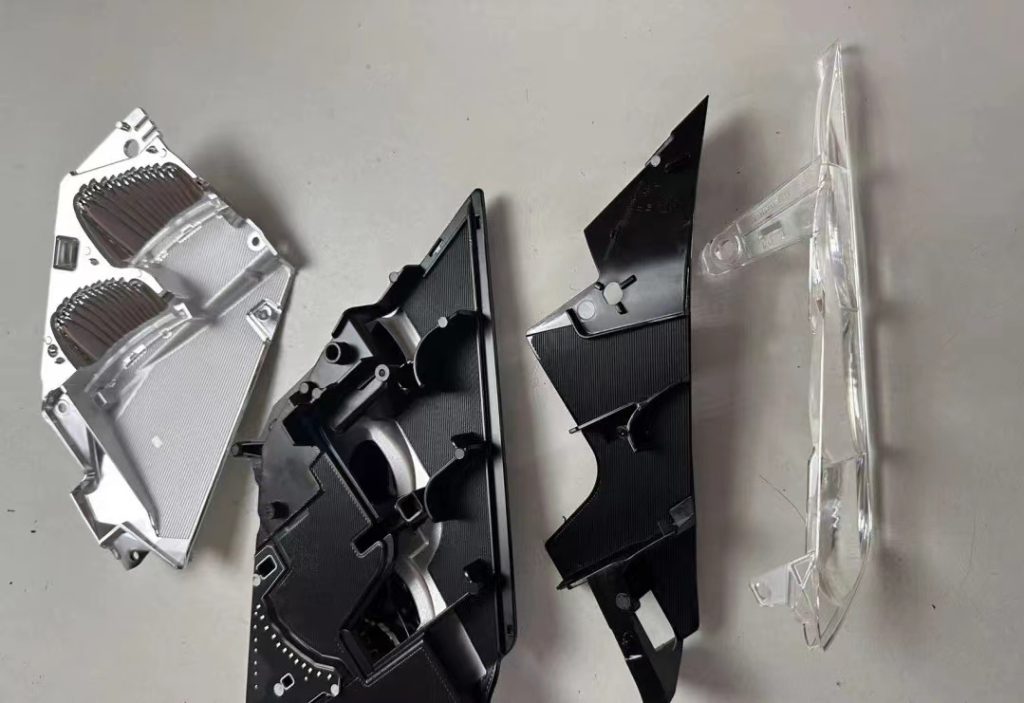
The bottom is composed of four large reflective bowls, corresponding to the H, I, J, and K cavities.

The I cavity and J cavity have 12 matrix LEDs and one auxiliary LED respectively, while the H cavity and K cavity on the sides have only one auxiliary LED. The purpose of this design is to prevent the high beam lens from being blinded when only the low beam function is on. So the question is, in comparison, why are there no auxiliary LEDs in the two 12 LED cavities above? Wouldn’t they be blinded?
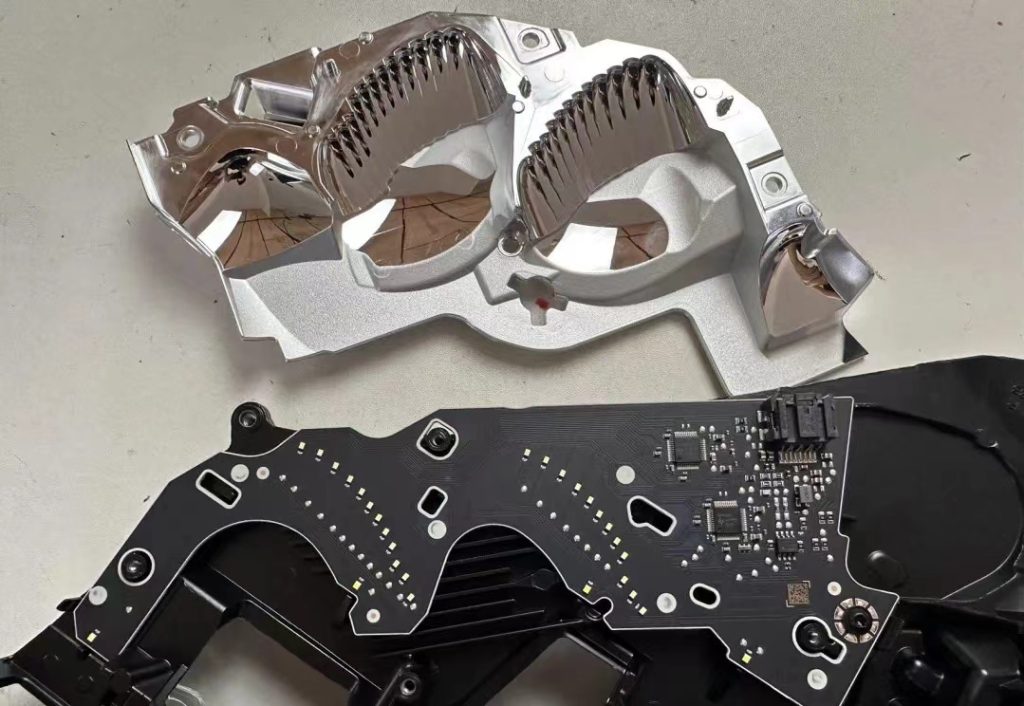
Like the side, there are two TI TPS92662A on the pcba.
OK, now that we have disassembled this special-shaped lens, let’s summarize it. First of all, the entire lens has a total of 62 LEDs, and the triangular lens on the grille side has a total of 52 LEDs for the matrix high beam function. The E cavity and F cavity only have 12 matrix LEDs without auxiliary LEDs. The editor speculates that this is for the kink function of the low beam. The 10 LEDs in the quadrilateral near the fender are for the flat function, and together form the low beam, so there will be no “blind people”.
Finally, I’ll attach a family photo with a lens.

Finally, I have one more question for you: Why are there these dots on the quadrilateral lens? Please give your answer in the comments section.
